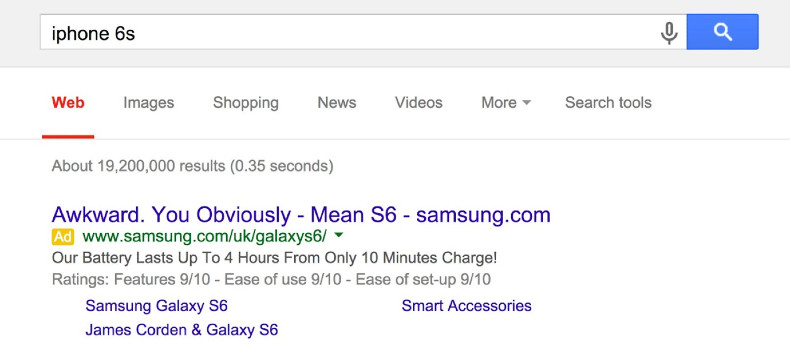Software as a service is becoming more and more essential in both our work and our social lives. App use at companies of all sizes was up some 30% from 2018 to 2019, according to the 2020 SaaS trends report.
For SaaS companies looking to drive traffic, build awareness, and generate leads, pay-per-click advertising is one of the most powerful tools on the market.
But due to such huge growth in the SaaS industry, PPC ads are becoming increasingly competitive. Standing out from the crowd and getting in front of your ideal audience is becoming more and more difficult (and staring helplessly at your dashboard of Google Ads can be daunting).
This article compiles our favorite PPC tips, which have worked wonders in helping SaaS campaigns rise above their competitors.
1. Focus on micro-conversions
If your business is running PPC ads, it makes perfect sense to drive people to a landing page with the expectation that they will commit to a demo, sign up for a trial, or inquire about your service. But try thinking about the situation from the customer's perspective: They may have never heard of you or your product, and they have only two options—sign up or leave. It's like buying a new house: You don't just walk through the front door and decide right away.
A monthly SaaS subscription is a big commitment, regardless of price. No company wants to keep switching software, especially if multiple people or teams are using it. So as with any big commitment, you need to build a relationship and gain the customer's trust. It can be done gradually, using content, newsletters, and whitepapers.
If you keep your audience coming back, it's only a matter of time before they check out your product.
2. Rethink your keyword strategy
Often, marketers use PPC for bottom-of-the-funnel search terms, which tend to indicate buying intent. Instead, shift your focus to higher up in the funnel to adopt a lead nurturing approach.
Search volumes around commercial terms for SaaS are often low because in many cases people aren't even aware that a solution to their problem exists. So, instead of showing ads for the name of your software, bid on "problem" keywords: Think about the most common issues your audience experiences, and the reasons they would turn to you to fix them.
Let's say you provide team management software. Instead of using keywords such as "team management software," try something like "how to improve team performance." People will often start searching around their problems before they start searching for a solution. Normally, that's where content marketing comes in handy. But there is no harm in running Google Ads to get in front of the same audience.
3. Split-test your ads
We all have our own requirements and preferences, as people and as businesses. Whereas one piece of software may have many features, each business has its own needs and priorities—which is why you should be experimenting with your ad copy. What matters to one customer might not matter so much to another. There might be features of your software that you think are great but your customers don't really care about them.
Pick the three primary features of your service and write a different ad for each one. Ensure your landing pages are aligned with your ad messaging. Create a landing page for each feature you've made an ad for. Nothing is worse than landing on a page that has no relevance to the ad that you just clicked.
Run the ads for a few weeks and compare the engagement. How long you run each ad should depend on the volume of impressions and clicks you get: 500 or 1,000 clicks give a much more realistic view of performance than 10 or 20.
Once you know which ads are performing the best and the worst, try pausing or rewriting the worst one, or try another ad highlighting a different software feature.
4. Bid on your competitors
Another great way to get in front of your relevant audience is to run a campaign that shows ads to people who are actively searching for the brand names of your competitors. This is a great opportunity to build a comparison landing page or discuss why your product is a better alternative.
Here is a great example—an ad that Samsung used a few years ago when the iPhone 6s was released:

Source: Think With Google
All sorts of people could be searching for your competitor's brand name: their customers, some of whom are dissatisfied with their service; or others who are new to the market and are looking at all potential service providers. Both are great opportunities to display an ad that makes them aware of your company.
5. Stay at the forefront
The bigger the commitment, the longer the customer sales cycle. It's important to not push the customer too fast, but it's also important to keep in front of them during the decision-making period. A great way to do so is remarketing, specifically display remarketing: showing banner ads on other websites to people who have previously visited yours.
The simplest approach would be to create generically branded banners. You may also want to set exclusions for customers who have already visited a login page or customer service section of your site.
A more advanced method would be to segment your audiences via the pages they have previously visited. Let's say you have a set of pages or blog posts that pertain to a particular audience or feature of your service. You may want to create a set of display banners with specific messaging targeted to that particular audience or feature so that anyone who has previously visited those pages will start to see those targeted banners around the Web.
* * *
There you have it: five tips to better SaaS PPC performance. The sooner you start testing and implementing improvements, the sooner you'll start seeing results. Good luck.




